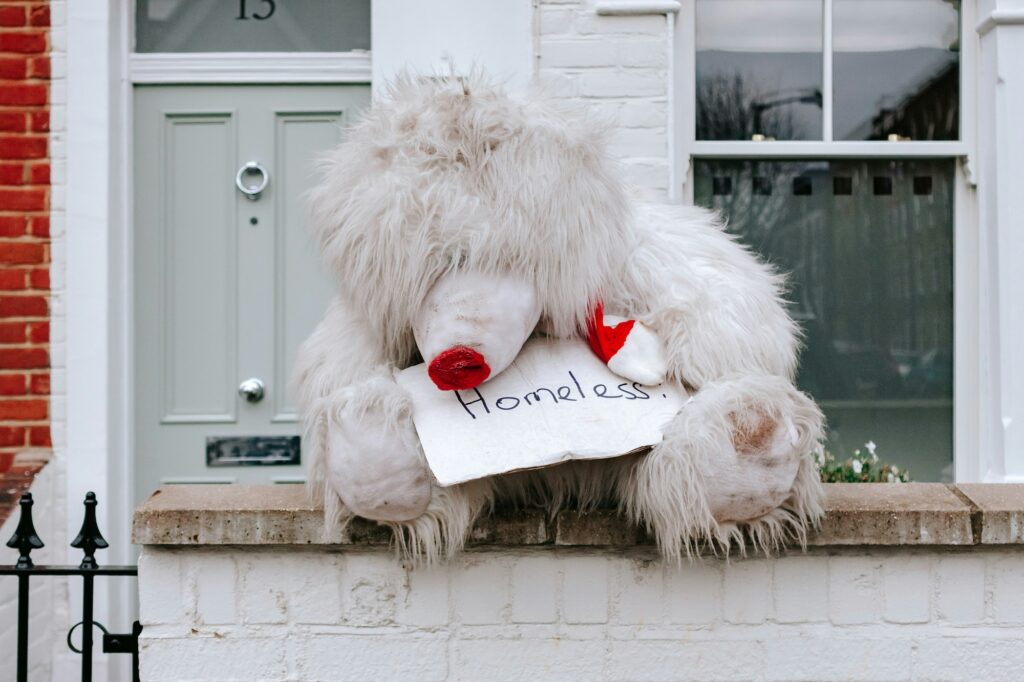Iwan Brioc explains why his reciprocal well-being model goes beyond traditional frameworks, asking us to rethink our values, systems and perceptions.
Wales is on the brink of a transformative revolution in how we think about well-being, thanks to the Well-being of Future Generations (Wales) Act (WFG Act). But turning this vision into reality is no easy task. As we stand at this crucial moment, we need a holistic and systemic approach that integrates not just individual well-being, but the well-being of communities and the environment. The Reciprocal Well-being Model, which I developed, offers such an approach, providing a comprehensive framework to tackle the complex issues we face today.
In creating this model, my aim was to go beyond traditional well-being frameworks that often focus solely on personal health or economic prosperity. The Reciprocal Well-being Model challenges us to rethink our values, our systems, and even how we perceive ourselves and our place in the world. It’s a model rooted in reciprocity, meaning that true well-being is achieved only when there is a balance of giving and receiving between individuals, society, and the natural world.
Rethinking Well-being: A Systems Approach
At the core of the Reciprocal Well-being Model is the idea that well-being is not a linear journey, but a cyclical process. Traditional models like Maslow’s hierarchy of needs suggest that we must achieve one level of well-being before moving on to the next. In contrast, my model sees well-being as a dynamic system in which various domains — such as the environment, culture, society, and the individual — interact with one another.
In creating this model, my aim was to go beyond traditional well-being frameworks that often focus solely on personal health or economic prosperity.
This is not a new idea. Indigenous cultures have long understood the interdependence of humans and nature. But modern society has largely forgotten this lesson, instead placing human beings at the centre of everything. We’ve become a consumer-driven society, valuing individuals based on their economic contribution rather than their intrinsic worth. This, in turn, has led to the environmental degradation, social isolation, and mental health crises that we face today.
In developing the Reciprocal Well-being Model, I sought to bring this understanding back to the forefront. I wanted to create a framework that recognises the importance of the environment not just as a resource, but as something we must nurture and love if we are to thrive. In this model, I use the term “re-enchantment” to describe this process of falling back in love with the natural world, with each other, and with life itself.
The Radical Shift Wales Needs
The Well-being of Future Generations Act gives Wales a unique opportunity to lead the world in creating a more sustainable and just society. But to fully realise the potential of the Act, we must go beyond surface-level changes and embrace a radical shift in consciousness. This is where the Reciprocal Well-being Model can play a crucial role.
For too long, we’ve been operating under what I call the “illusion of society” — the idea that our value comes from our ability to consume and produce in a market-driven economy. This illusion has permeated every aspect of our lives, leading to a society that prioritises economic growth over human and ecological well-being. But this model is not sustainable, and it’s time for a change.
The Reciprocal Well-being Model offers an alternative. It suggests that well-being is not something that can be achieved in isolation. Rather, it is a collective endeavour that requires all of us — individuals, communities, governments, and businesses — to work together. It calls for a shift away from individualism and towards a recognition of our interconnectedness. Only by fostering reciprocal relationships between ourselves, our communities, and the environment can we hope to achieve true well-being.
Innovative. Informed. Independent.
Your support can help us make Wales better.
A Practical Framework for Policy
One of the strengths of the Reciprocal Well-being Model is that it provides a practical framework for implementing the Well-being of Future Generations Act. The Act outlines seven goals for Wales: a healthier Wales, a more equal Wales, a resilient Wales, a globally responsible Wales, cohesive communities, a prosperous Wales, and a Wales of vibrant culture and thriving Welsh language.
Each of these goals aligns perfectly with the seven domains of the Reciprocal Well-being Model: the environment, culture, infrastructure, society, the outer self, the inner self, and the concept of “no self.” For example, the goal of a healthier Wales is supported by the model’s emphasis on both personal and communal well-being, while the goal of a resilient Wales is reflected in the model’s focus on environmental sustainability.
By applying the model’s framework, policymakers can create strategies that address these goals holistically rather than in isolation. For instance, instead of simply focusing on economic growth as a means to achieve prosperity, the Reciprocal Well-being Model suggests that true prosperity comes from a balance of social, environmental, and economic well-being. This approach ensures that the health of both people and the planet are treated as interconnected priorities, essential for a prosperous and resilient Wales.
The Role of Context-Oriented Arts
A key component of the Reciprocal Well-being Model is the role of Context-Oriented Arts (CoArts) in driving social change. I believe that art has a unique ability to shift consciousness and foster deeper connections between people. CoArts uses creative activities to engage communities in a reflective process that encourages both individual and collective transformation.
By using the arts as a catalyst for dialogue and reflection, we can help people re-engage with their communities and the environment.
The creation of a Context-Oriented Arts Network (COAN) could be instrumental in implementing the Reciprocal Well-being Model. By using the arts as a catalyst for dialogue and reflection, we can help people re-engage with their communities and the environment. CoArts activities can serve as a platform for exploring new ways of thinking about well-being and for developing the skills and mindset needed to bring about the radical shift that the model advocates.
Comparative Assessment: The Reciprocal Well-being Model vs Other Well-being Models
To fully appreciate the strengths of the Reciprocal Well-being Model, it’s helpful to compare it with other established well-being models. Each model has its own merits, but the Reciprocal Well-being Model stands out for its holistic, systemic approach.
Maslow’s Hierarchy of Needs
One of the most well-known well-being frameworks, Maslow’s hierarchy outlines a linear progression from basic physiological needs to self-actualisation. While Maslow’s model is valuable for understanding individual psychological growth, it falls short in addressing broader societal and environmental factors. In contrast, the Reciprocal Well-being Model integrates personal, social, and ecological domains, recognising that individual well-being is intertwined with the health of society and the environment.
Maslow’s model also tends to emphasise a top-down approach to well-being, where certain needs must be met before others. My model, however, is cyclical and non-linear, allowing for a dynamic flow between domains. This flexibility is particularly important in a rapidly changing world where environmental and social conditions are constantly shifting.
OECD Better Life Index
The OECD Better Life Index measures well-being across multiple areas such as income, health, education, and work-life balance. It’s a useful tool for comparing well-being across nations, but it lacks the depth of the Reciprocal Well-being Model, which incorporates not only these measurable outcomes but also the relationships between them.
For example, the OECD index might highlight disparities in income or education, but it doesn’t address how these disparities affect social cohesion or mental health. The Reciprocal Well-being Model goes further by examining how these factors interact within a system. If income inequality leads to a breakdown in social relationships, this will affect both individual and community well-being. By focusing on the flow of well-being between domains, my model provides a more comprehensive understanding of the root causes of well-being or ill-being.
Robust debate and agenda-setting research.
Support Wales’ leading independent think tank.
PERMA Model of Well-being
The PERMA model, developed by psychologist Martin Seligman, focuses on five key aspects of well-being: Positive emotions, Engagement, Relationships, Meaning and Achievement. While the PERMA model offers a strong psychological perspective on well-being, it is primarily focused on individual experiences and does not fully consider the role of the environment or societal structures in shaping well-being.
The Reciprocal Well-being Model expands on PERMA by incorporating societal and environmental factors into the equation. Positive emotions and relationships, for example, are essential components of well-being, but they are influenced by external factors such as social inequality or environmental degradation. By integrating these wider contexts, my model offers a more nuanced and interconnected view of well-being.
Doughnut Economics
Kate Raworth’s Doughnut Economics model is perhaps the closest parallel to the Reciprocal Well-being Model. Like my model, Doughnut Economics recognises the importance of balancing human needs with planetary boundaries. It provides a framework for ensuring that everyone has access to life’s essentials — such as food, water, and shelter — while respecting the limits of the Earth’s ecosystems.
Where the Reciprocal Well-being Model differs is in its emphasis on personal and community well-being alongside ecological sustainability. Doughnut Economics is primarily concerned with macroeconomic policies, while my model focuses more on the micro-level interactions between individuals, society, and the environment. Both models advocate for a systems-based approach, but the Reciprocal Well-being Model adds a layer of psychological and social well-being that is not as prominent in Doughnut Economics.
Why Wales Needs the Reciprocal Well-being Model
Wales has a long history of resilience and innovation. We have always been a nation that values community, culture, and the land. The Well-being of Future Generations Act reflects these values, but legislation alone is not enough. We need a framework that helps us put these values into practice in a way that is sustainable and inclusive.
At its heart, the Reciprocal Well-being Model is about love — love for ourselves, for each other, and for the planet.
The Reciprocal Well-being Model is that framework. It provides a roadmap for achieving the goals of the Act by recognising the interdependence of all aspects of well-being. It encourages us to move beyond narrow definitions of success and to embrace a more holistic view of what it means to live a good life.
At its heart, the Reciprocal Well-being Model is about love — love for ourselves, for each other, and for the planet. It’s about recognising that we are all part of the same system and that the health of one part affects the health of the whole. By nurturing these relationships, we can create a future that is not just sustainable, but thriving.
Conclusion
Wales has a unique opportunity to lead the way in creating a more just, sustainable, and thriving society. The Well-being of Future Generations Act sets out a bold vision for our future, but to achieve it, we need more than just policies and programmes. We need a fundamental shift in how we think about well-being, one that recognises the interconnectedness of individuals, communities, and the environment.
The Reciprocal Well-being Model offers a way forward. By embracing this model, Wales can not only meet the goals of the Well-being of Future Generations Act but go beyond them, creating a society that values reciprocity, connection, and love. It’s time for us to wake up and fall in love with the world again — and in doing so, create a better future for ourselves and future generations.
All articles published on the welsh agenda are subject to IWA’s disclaimer. If you want to support our work tackling Wales’ key challenges, consider becoming a member.





